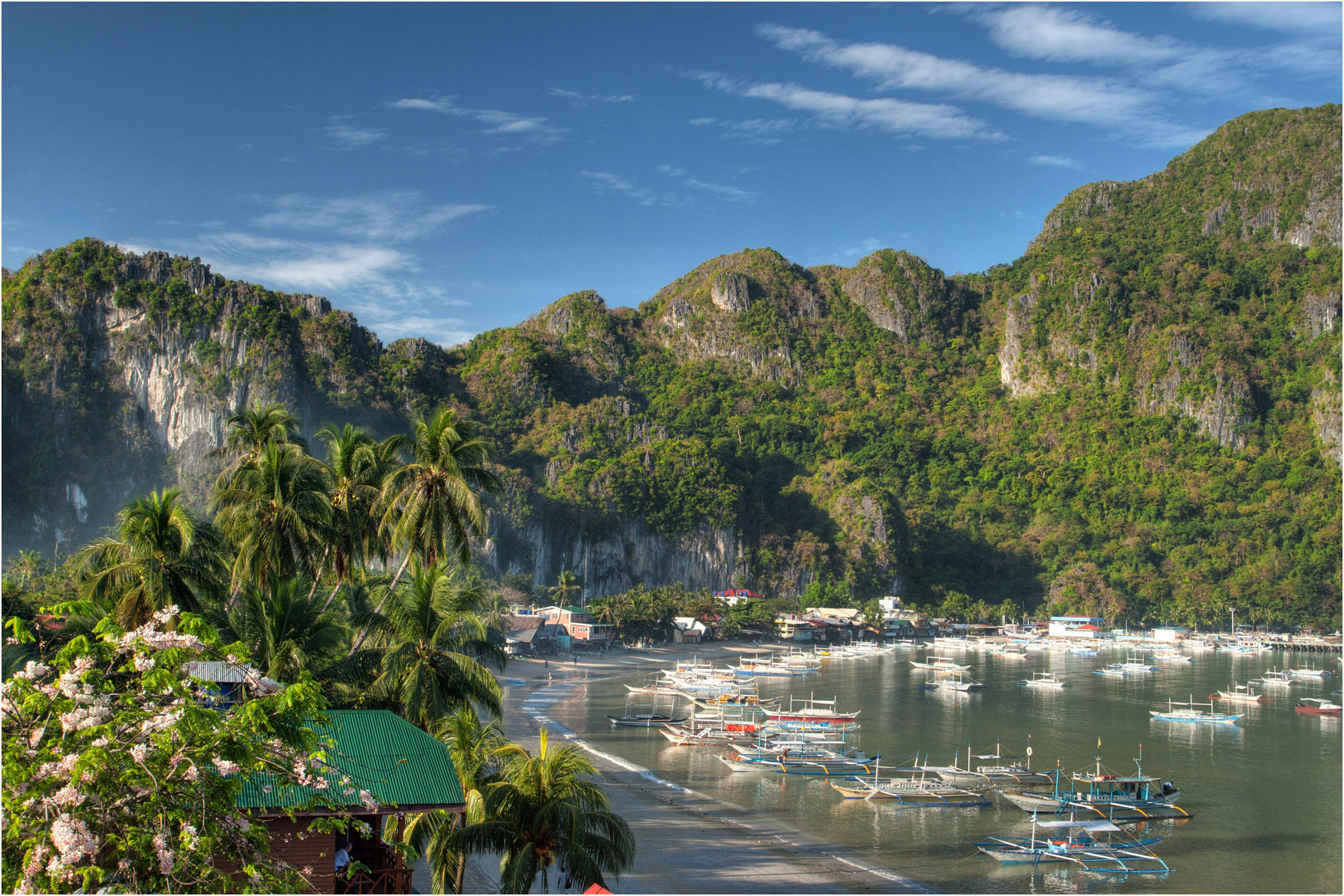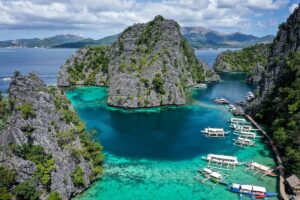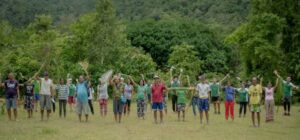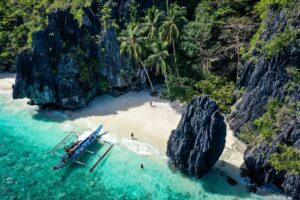
El Nido Palawan: A Paradise Unveiled – A Journey Through Time (History of El Nido Palawan)
El Nido, Palawan. The name itself conjures images of turquoise waters lapping against pristine beaches, towering limestone cliffs guarding hidden lagoons, and a sense of paradise untouched by time. But beneath the surface of this idyllic island paradise lies a rich and captivating history, a story waiting to be unearthed. Delving into the history of El Nido Palawan is like embarking on an adventure through time, a journey that reveals the fascinating tapestry woven by indigenous communities, colonial influences, wartime secrets, and the modern rise of a global tourist destination.
The Dawning of Humanity: History of El Nido and it’s Indigenous Caretakers
Long before the arrival of foreign explorers, El Nido pulsed with the rhythm of life established by the Cuyonon and Tagbanua indigenous peoples. These resilient communities thrived for millennia, living in harmony with the land and sea. They were skilled hunters, gatherers, and fishermen, their way of life deeply intertwined with the natural world. Evidence of their presence can still be found in caves scattered throughout the region, whispering tales of a bygone era.
Archaeological findings suggest that the Cuyonon and Tagbanua people may have developed complex social structures with designated roles for hunters, gatherers, and artisans. Their diet likely consisted of fish, shellfish, wild boar, and various fruits and vegetables indigenous to the region.
A Spanish Encounter: The Birth of El Nido
The arrival of the Spanish in the late 16th century marked a turning point in El Nido’s history. Captivated by the abundance of edible swiftlet nests clinging to the limestone cliffs, the Spanish christened the area “El Nido,” which translates to “The Nest” in Spanish. However, El Nido’s remoteness and lack of readily exploitable resources limited the Spanish influence. The region remained relatively untouched, a characteristic that would later play a significant role in preserving its natural beauty.
While the Spanish presence wasn’t extensive, they might have introduced some new tools and technologies to the local communities. It’s also possible that there were cultural exchanges, with elements of Spanish language or religious practices finding their way into the local traditions.
Shifting Tides: American Occupation and World War II
The 19th century saw another shift in power as the Philippines, including Palawan, fell under American administration following the Spanish-American War. While efforts were made to develop infrastructure in the region, El Nido remained relatively isolated due to its northern location and limited access. This isolation, however, proved fortuitous during World War II. El Nido’s strategic location in the Pacific theater made it a haven for Japanese forces. The bay served as a crucial shelter for their fleet, remnants of which can still be glimpsed in the form of sunken warships scattered between Coron and El Nido. Intrigued by these remnants of history? Consider embarking on an unforgettable adventure with Green Gecko Expeditions. Their meticulously planned 3-day Coron to El Nido boat trip or El Nido to Coron expedition (whichever direction your adventure takes you) provides a unique opportunity to explore these captivating underwater wrecks while cruising through some of the most breathtaking landscapes in the Philippines.
During the Japanese occupation, El Nido Bay likely witnessed a flurry of activity. The Japanese might have constructed fortifications or military installations to protect their fleet. Understanding the role El Nido played in WWII strategy adds another layer to the region’s fascinating history.
Paradise Unveiled: The Rise of Tourism
Following the war, El Nido embarked on a new chapter. The 1970s witnessed a surge of adventurous travelers seeking destinations far from the beaten path. El Nido’s pristine beauty, with its untouched beaches and hidden coves, perfectly fit the bill. The local government, recognizing the region’s potential, began actively promoting El Nido as a tourist destination in the 1980s.
A Delicate Balance: Conservation and Sustainable Tourism
El Nido’s transformation into a tourist haven has not been without its challenges. The delicate balance between economic development and environmental protection has become a crucial concern. In 1983, a significant step was taken with the declaration of El Nido and its surrounding islands as a marine reserve. This designation, later expanded to encompass the El Nido-Taytay Managed Resource Protected Area (ENTMRPA), aims to safeguard the region’s rich biodiversity, from its vibrant coral reefs to the majestic limestone formations and the diverse marine and land wildlife.
Today, El Nido thrives as a premier tourist destination, attracting visitors worldwide. Sustainable tourism practices are actively promoted, with local communities playing a vital role in eco-tourism initiatives. Resorts and tour operators are increasingly aware of their responsibility to protect the environment, ensuring that future generations can continue to experience the magic of El Nido.
The history of El Nido Palawan is a testament to the enduring power of nature and the resilience of the human spirit. It is a place where ancient traditions meet modern development, a breathtaking testament to the enduring beauty forged through time. So, pack your bags, embrace the spirit of adventure, and embark on your own exploration of this captivating island paradise.
Local Communities: Stewards of the Paradise
The History of El Nido, and it’s transformation wouldn’t be complete without acknowledging the role local communities have played. As tourism flourished, these communities directly impacted the region’s development. Many residents became involved in the tourism industry, working in hotels, restaurants, and as tour guides.
More importantly, local communities have emerged as strong advocates for sustainable practices. They understand that preserving the environment is essential for the long-term success of tourism in El Nido.
Several eco-tourism initiatives are spearheaded by local residents. These initiatives focus on responsible waste management, promoting cultural heritage through tours and workshops, and marine conservation programs that protect the coral reefs and marine life.
By working together with the government and tourism organizations, local communities ensure that El Nido’s natural beauty is safeguarded for future generations.
A Glimpse into the Future
El Nido’s journey is far from over. As the popularity of this island paradise continues to grow, responsible management and sustainable practices will be paramount.
Continuing investment in infrastructure, such as eco-friendly transportation and waste management systems, will be crucial. Educational programs can raise awareness among tourists about responsible behavior while visiting El Nido.
El Nido’s rich history and breathtaking beauty position it as a beacon of sustainable tourism. By learning from the past, embracing local knowledge, and prioritizing conservation, El Nido can ensure a bright future for itself and its people.




